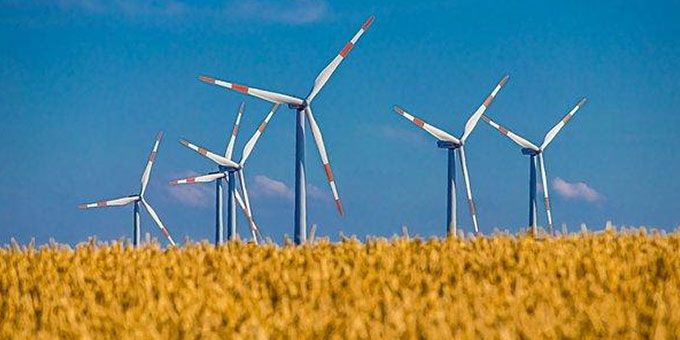A whopping 90% or more of wind turbine fires originate in the nacelle. The nacelle contains the gear box, the generator, the controller, the low- and high-speed shafts, and the brake—and it (the nacelle) sits atop the tower.
 Understanding Wind Turbine Fire Protection
Understanding Wind Turbine Fire Protection

Article from | Stat-X
Humankind is believed to have utilized wind energy since as early as 5,000 BC. Historically, Europeans—notably the Dutch—have been the most well-known for their forward-thinking use of windmills. But before the turn of this century, one would be hard-pressed to find much of anyone (at least in the U.S.) terribly concerned about the subject matter of this article.
It was not until after the oil shortages of the 1970s that significant strides began to be made in regard to alternative energy sources. And it was not until the 1990s and 2000s that the federal government began taking a proactive and aggressive role in promoting renewable energy sources, including wind energy.
The reasons for the upsurge in the use of wind energy—in addition to the simple need for alternative energy sources—perhaps may be obvious, but following are a few of the most significant:
-
It is a clean fuel source, emitting none of the pollution as do power plants which rely upon the combustion of fossil fuels.
-
Wind energy is a domestic energy source, generally in abundant supply throughout the globe.
-
Wind energy is sustainable. As long as wind blows on this Earth, energy can be produced from it.
The demonstrated value of wind energy as a renewable energy source is not in question. But as with most things of benefit, it does not come without a high price tag. A typical commercial wind turbine (2-3 MW in power) can cost anywhere from $2.5 to $4 million, and the operation and maintenance of just one can range between $40,000-$50,000 per year.
Clearly, these “beasts” (measuring anywhere from 300 to over 600 feet in total height) need to be protected from damage and/or destruction utilizing informed and proven best practices. The second-leading cause of wind turbine accidents is fire, and, fire is one of the most common factors leading to property and even personnel loss in wind turbine failures and/or accidents. Therefore, an educated and proactive approach to fire prevention and fire suppression within this renewable energy source is mandatory for all involved.
How does a fire most commonly occur in a wind turbine?
A whopping 90% or more of wind turbine fires originate in the nacelle. The nacelle contains the gear box, the generator, the controller, the low- and high-speed shafts, and the brake—and it (the nacelle) sits atop the tower (the part that supports the structure of the turbine and the blades). The ways that these fires are typically ignited are:
-
A lightning strike (just think about how far these lightning rods are off of the ground / up in the air)
-
Electrical malfunction / mechanical failure
-
Maintenance activities (which is when personnel are present and would be at risk)
What happens when a wind turbine fire does occur?
Approximately 90% of wind turbine fires result in significant damage to or a total loss of the wind turbine, as well as significant downtime and thus other economic losses. This is because the typical response is simply to wait for the fire to burn out. Further, burning materials that fall to the ground or which are blown by the wind can create a significant risk of extending the fire—and thus damage and loss—to the ground and/or surrounding property.
The above-described disastrous loss(es) can easily and cost-effectively be avoided by employing appropriate fire suppression methods, addressed in more detail below.
What can be done to prevent a nacelle/wind turbine fire in the first place?
When addressing fire protection for wind turbines (prevention as well as suppression), the best practices include both passive and active fire protection measures.
Passive fire protection is pretty much what the term “passive” implies, i.e., it is fire protection which, once implemented, does not require active action. Some examples of passive fire protection of wind turbines are:
-
Choosing noncombustible materials during construction (in this case, specifically, the nacelle)
-
Selecting/using noncombustible hydraulic and lubrication oils
-
Compartmentalizing the nacelle area
-
Installing lightning protection systems
-
Installing systems to monitor the conditions of components/equipment
So what are the best, most effective systems to use once a fire has been ignited in a wind turbine?
No matter the extent of passive fire protection measures which are employed, one can never assume that a fire will not occur. And once a fire does occur, immediate measures must be taken, particularly before a very small, undetected, and remote fire evolves into one which significantly damages or totally destroys a wind turbine.
In the case of a wind turbine fire (as with many other industrial fires), active fire protection involves:
-
Instant fire detection
-
Instant triggering of fire alarm systems
-
Quick-acting fire suppression systems
The most widely used and most effective fire suppression systems in wind turbines are aerosol systems. A connected smoke/heat detector sends a signal to the aerosol system which immediately activates a discharge of the fire extinguishing agent. The fire is extinguished almost as quickly as it started, minimizing both the risk of extensive property loss, as well as potential loss of life.
All wind turbines should be equipped with an intelligent fire detection and aerosol suppression system. The cost of having such a system is minimal; yet, in the event of a fire, the cost of not having such a system would most likely be catastrophic.
Therefore, a proactive approach to wind turbine fire protection is essential. The simple, non-obtrusive installation of a proven detection and suppression system is a must for these confined, remote, and costly assets.
1. Offshore turbines can be as large as 12 MW; based upon a typical cost of $1.3 million per MW, this represents a cost of over $15 million per offshore turbine. Wind Turbine Cost: Worth The Million-Dollar Price In 2020? (weatherguardwind.com)
The content & opinions in this article are the author’s and do not necessarily represent the views of AltEnergyMag
Comments (0)
This post does not have any comments. Be the first to leave a comment below.
Featured Product

